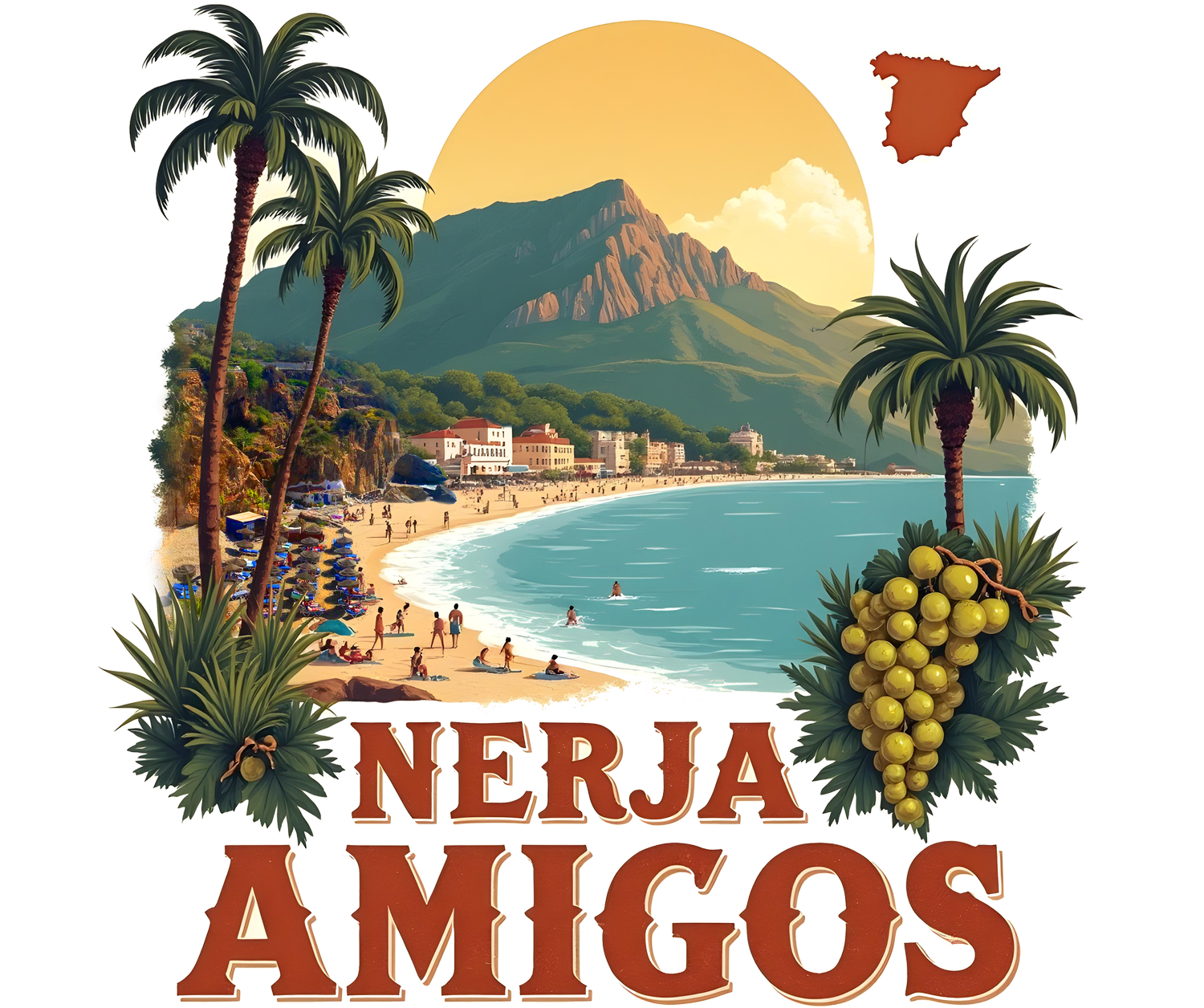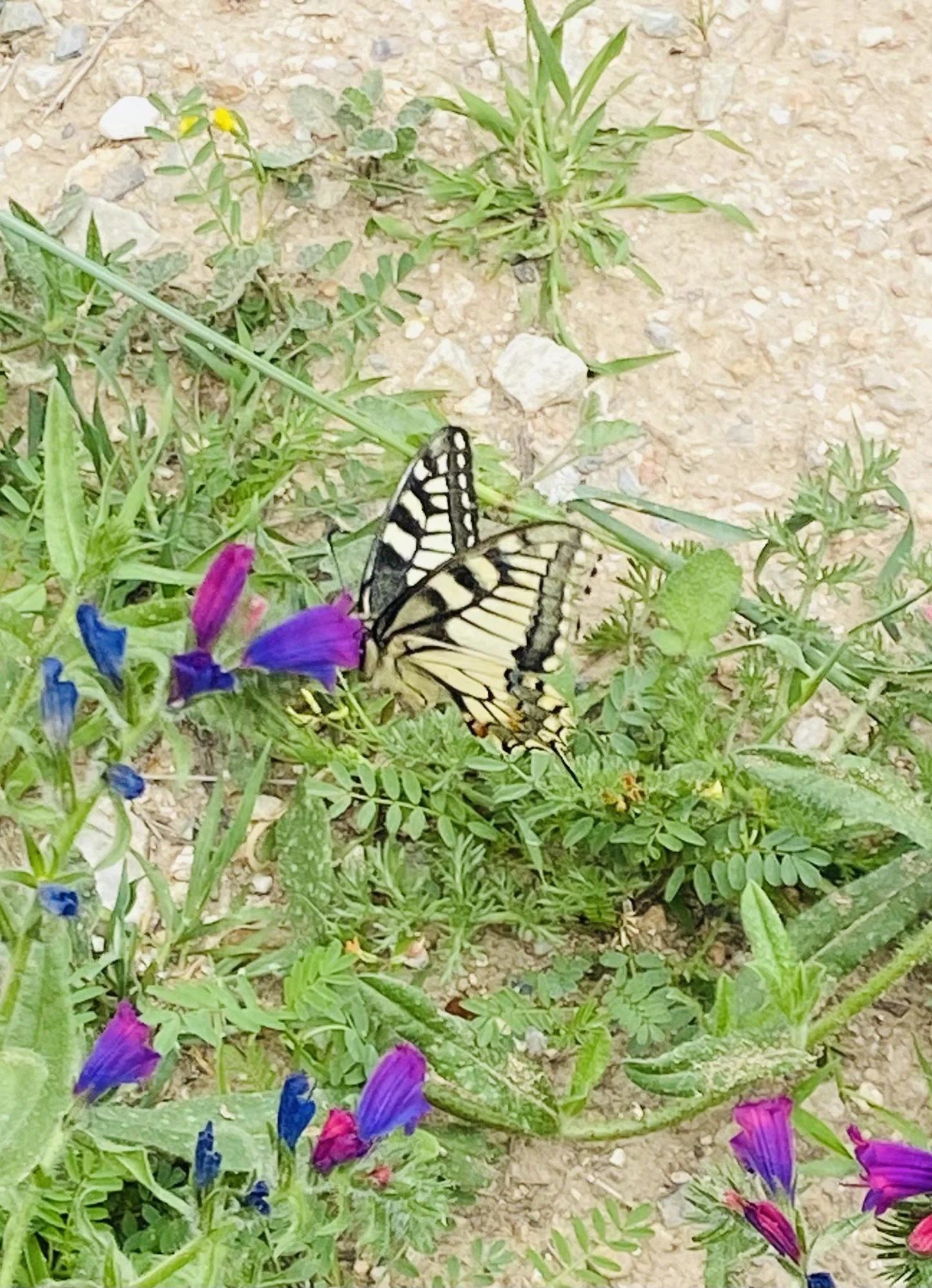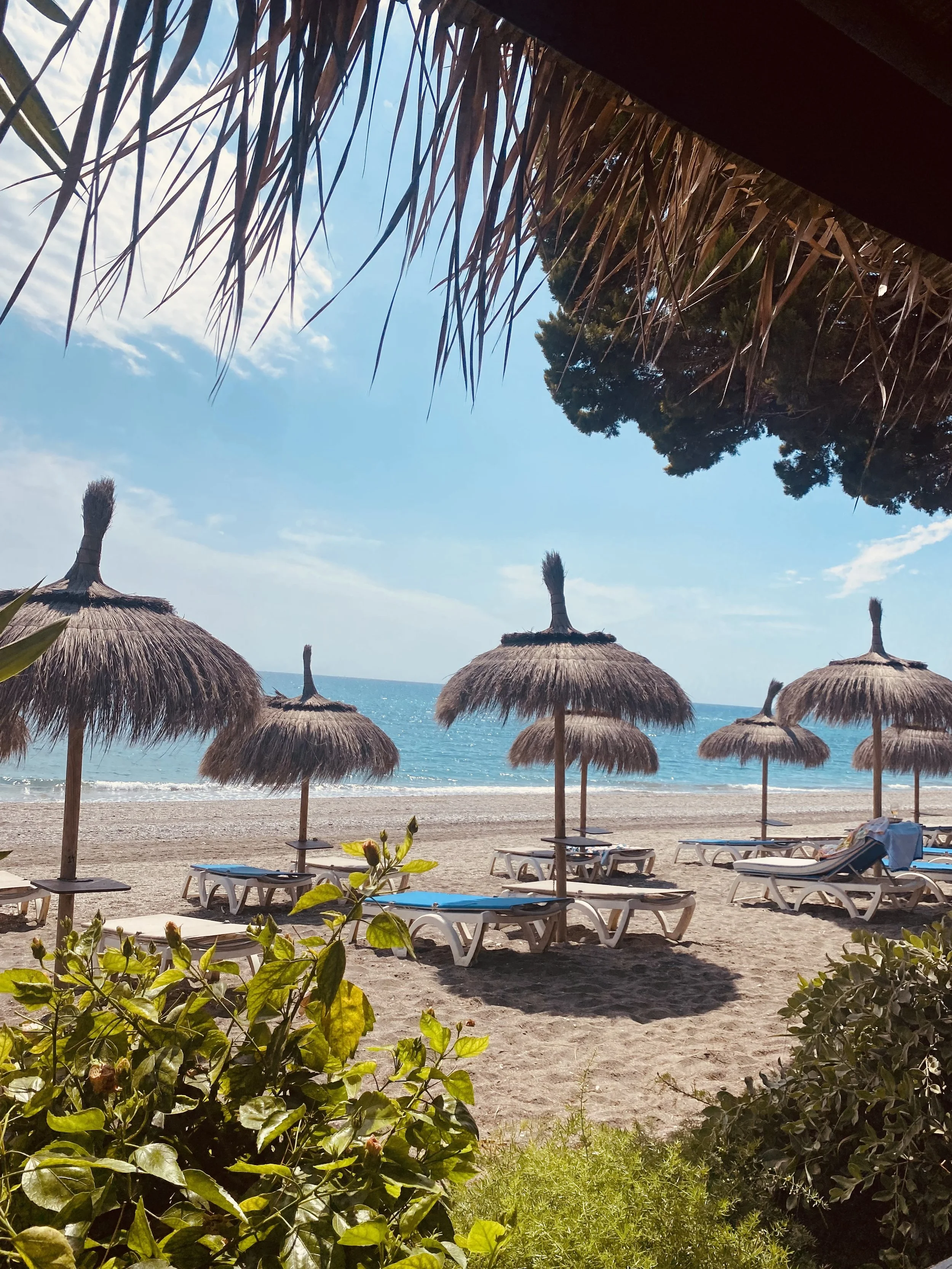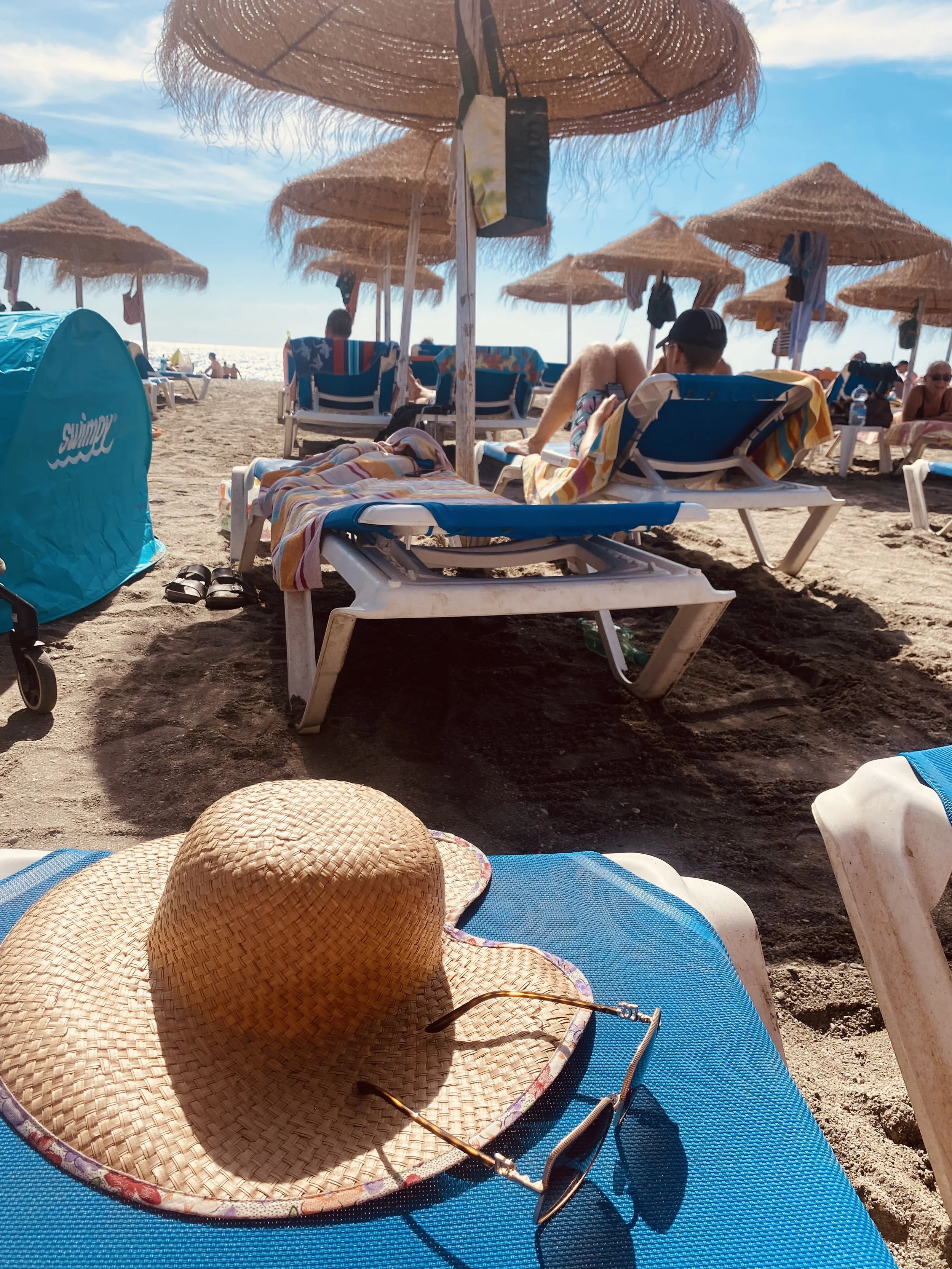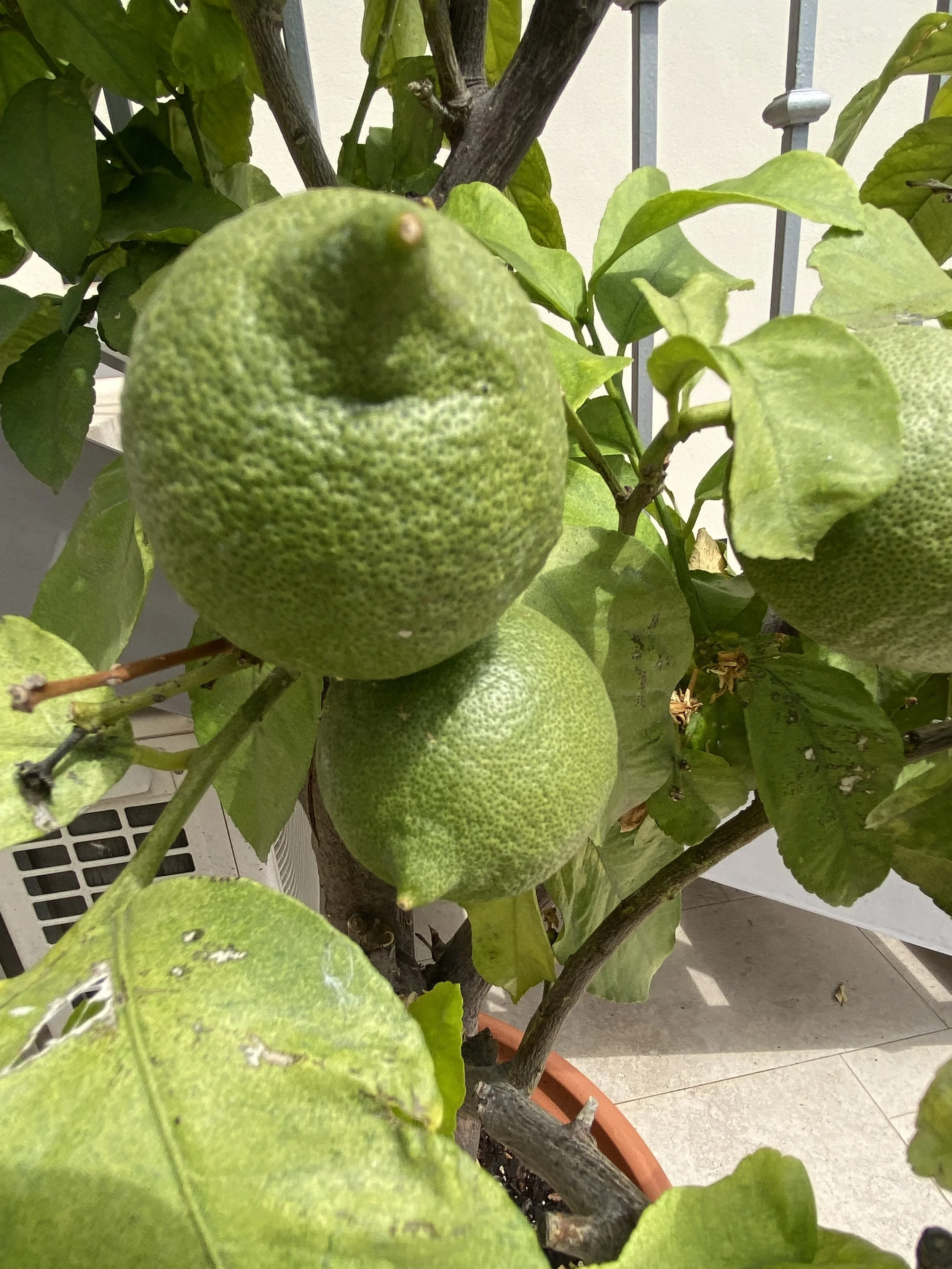The Seasons in Nerja - A Year of Light, Colour and Local Traditions
Spring in Nerja (March–May)
Spring in Nerja begins softly, with temperatures rising from around 16–22°C in March, 18–23°C in April, and reaching 20–25°C in May. March is generally the most likely ¨rain season¨, but we have had summer starting early too. The hills around Nerja and Frigiliana turn green, wildflowers bloom and the air carries the first warm hints of summer. Although the Río Chíllar gorge remains closed, the wide riverbed leading from Nerja to Frigiliana can still be walked safely as long as there is no water, offering a peaceful and scenic nature route beneath the mountains. Spring is filled with beloved traditions: Semana Santa brings moving Easter processions through the old town, and San Isidro on 15 May transforms the streets with horses, flowers, traditional dress and a joyful pilgrimage that begins near the caves and continues all the way to the feria ground. Beaches become lively again, mornings feel fresh and bright, and it is the perfect season for coastal walks, exploring the white villages of Axarquía and enjoying Nerja before the heat of summer arrives.
Summer in Nerja (June–August)
Summer in Nerja is warm, bright and full of Mediterranean energy, with daytime temperatures typically 28–35°C and evenings that stay wonderfully warm at 25–30°C. June begins with the magical night of San Juan, when bonfires flicker along Burriana, the Playazo and small coves, families gather with food and music, and at midnight many step into the sea for good luck. As July settles in, the sea becomes beautifully clear and perfect for swimming, snorkelling and kayaking around the cliffs of Maro. Every evening in August, Plaza Cangrejos near Torrecilla Beach turns into a small open-air stage with free performances, live music and children’s shows that bring a warm holiday feeling to the entire area.
August is the busiest month, when families from Madrid and other major Spanish cities arrive for their summer holidays. Town beaches can be completely full, making Playazo Beach and the beaches outside Nerja - towards Maro and beyond or Torrox - ideal options for more space and calm. Late August brings a cultural event of: Frigiliana’s Festival of the Three Cultures, where music, food, history and street performances transform the village into a glowing celebration of its Christian, Jewish and Muslim heritage. Summer ( July ) also includes the emotional Virgen del Carmen procession, when the statue of the Virgin is carried to the sea, placed onto a boat and honoured. Warm nights turn into late evenings outdoors, with terrace dinners, slow walks and the unmistakable feeling of Mediterranean summer joy.
Autumn in Nerja (September–November)
Autumn in Nerja is golden, calm and beautifully warm. September still feels like summer with 25–30°C, warm seas and quieter beaches. October brings comfortable days around 22–26°C, perfect for walking, exploring and taking day trips. November offers gentle sunshine and temperatures around 18–24°C, with soft light that makes the coastline and the mountains glow. This is the ideal season for visiting the white villages of Axarquía, wandering through Frigiliana’s old streets, tasting local wines in Cómpeta or following scenic routes through olive groves and chestnut-covered hillsides. Nerja’s October Feria brings a cheerful mix of music, flamenco and celebration, while neighbouring villages hold traditional fiestas dedicated to chestnuts, sweet wine, olives and artisan produce. Autumn is also a fantastic time to visit Málaga, Granada or Antequera, where the weather is ideal for culture, museums and exploring without the heat of summer. This is our favourite season!
Winter in Nerja (December–February)
Winter in Nerja is mild, bright and far warmer than many expect, with daytime temperatures usually 15–20°C and cooler nights around 8–12°C. December feels festive and gentle, January is crisp and calm, and February often carries the first hints of early spring. From the Balcón de Europa you can often see the snow-covered Sierra Nevada shining against the blue sky, making winter the perfect time to enjoy both sun and snow — skiing in the morning and a seaside walk in the afternoon. The season is filled with Spanish traditions, including Christmas celebrations, New Year’s Eve and the joyful Three Kings Parade on 5 January, one of the happiest nights of the year for families. We generally see a few days of rain in November and February.
Winter is also the perfect moment to see the famous Christmas lights in Málaga, considered among one of the most spectacular in Europe. Calle Larios becomes a glowing tunnel of colour and music, drawing thousands to enjoy nightly light shows, festive displays and the magical atmosphere of the city at Christmas. With peaceful beaches, warm midday sun and easy access to cultural cities such as Granada, Córdoba and Málaga, winter in Nerja offers a beautiful balance of relaxation and adventure.
A Year of Mediterranean Variety
Each season in Nerja brings its own colours, rhythms and experiences. Spring feels fresh and full of life, summer is vibrant and filled with celebrations, autumn glows with warm light and peaceful days, and winter offers sunshine alongside snow-topped mountain views. Throughout the year, Nerja remains welcoming, colourful and full of moments that connect sea, mountains, local culture and the timeless charm of Andalucía.
do check our Calendar on our Fiestas Page for Events and Fiestas
